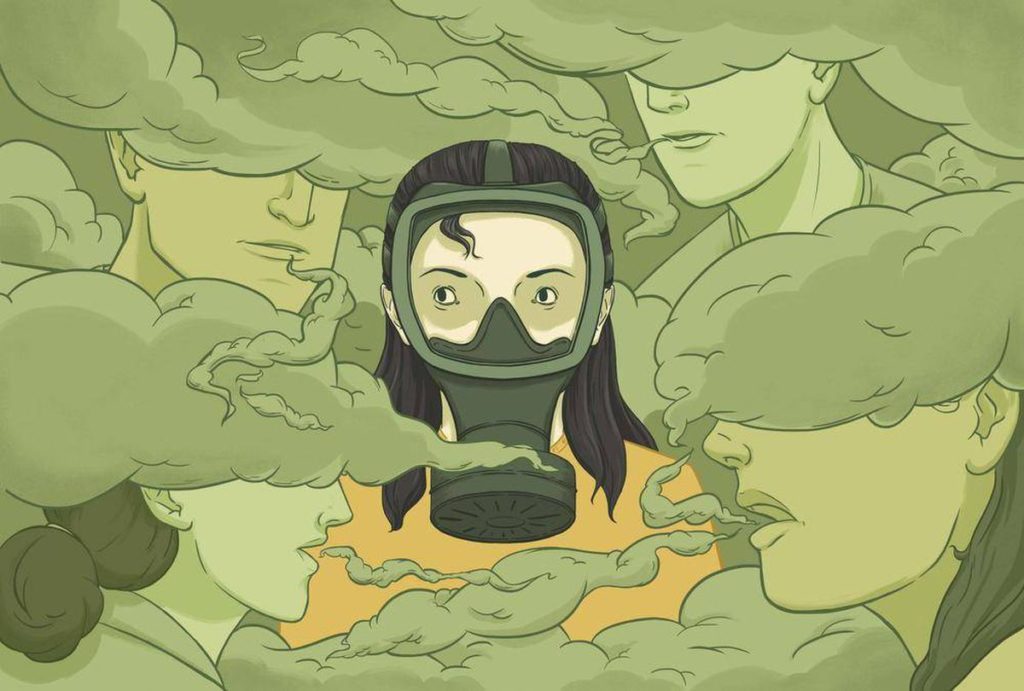
We all deal with people who we consider difficult. These are those individuals who we seemingly are just always on a different page from. While dealing with difficult people is challenging, it’s definitely doable, as they tend to have less of an impact on your life.
But, there are specific types of humans, those who are unbearable, miserable, and just leave a bad taste in your mouth; we like to define them as toxic. How do we handle those individuals? I get this question quite a lot, particularly when I’m doing a longer version of our Dealing with Difficult People training in the corporate world.
There are numerous strategies that you can use to deal with toxic people. Many depend on the individual exhibiting toxic traits, the behaviors they are displaying, and the context in which these interactions are taking place. Since the answers can be complex, we have split this article into two parts. In Part 1, we will discuss ways you can shift your mindset. In Part 2, we will look at active strategies.
Labels
One key detriment to us being able to move beyond these challenges is our propensity to label. We often revert to the labeling of someone as a sociopath, psychopath, narcissist, etc. without an actual clinical understanding of these disorders.
Yes, people with these certifiable conditions are more challenging, however, they are a lot fewer and farther between than contemporary thought or media would have us comprehend. Selfishness, jealousy, etc. are all natural, emotional states and in some cases are necessary for evolutionary survival. These traits do not necessarily imply the “dark triad” or psychopathy. Even labels like a jerk, asshole, etc. oversimplify the situation in many cases.
If we can separate the behavior from the person, we can often identify at least one or two redeeming qualities of difficult people. Additionally, even people with these clinical conditions are human, meaning that human wiring exists. It is hard to conceptualize, but even looking at the most evil people in history, there are examples of them exhibiting pro-social behaviors. Once a behavior is separated from the person, we can examine and identify the reason the behavior exists; it changes things.
For example, most people reject bullying and would not see themselves sympathizing with a bully. However, if they learn the person who is exhibiting bullying behavior has been mistreated and abused at home, it may change the perspective. While the behavior of bullying is still reprehensible, it explains why the behavior exists and opens space for compassion to the person exhibiting the bad behavior. If we label, we negate this possibility. The person “IS” a bully and there is no space for the person to not be this way. However, when we separate and can explain where the behaviors come from, it can open the door to empathy, even with people who exhibit terrible behaviors.
Us vs. Them
Humans often have assumptions and biases that prevent them from seeing the possibility of changing the situation with someone they dislike. However, I tend to point back to one of the most compelling stories of World War 2 when the Germans and British agreed to a short truce around Christmas time in order to retrieve and bury their dead. As each side was collecting their fallen comrades, first they started to help each other bring the bodies back to each other’s side; then they started helping each other bury their dead in the frozen ground; then they started sharing a Christmas meal, exchanging gifts, etc. They agreed to shoot over each other’s heads if forced into combat and they made plans to visit each other when the war had ended.
The truce that was supposed to last for a few hours ended up lasting a few days. It only ended when commanding officers arrived and demanded they go back to killing each other or be shot for treason. It took only a few hours for trained soldiers to completely shift their mindset about people (us vs. them) who had been firing at them days before. There are a number of stories that can be shared around this neuropsychological phenomenon that demonstrates the human capacity to change their outlook on “them” in a short (and sometimes long) period of time.
It is important to remember, the only behavior that you can control is your own. You can influence other people’s behavior, but we cannot control them. As such, we need to practice Behavioral Intelligence and learn to better manage our place in the behavioral ecosystems we live within. When you find a toxic element in your ecosystem, I am hopeful that these insights will give you a different perspective and approach to better manage them, but more importantly yourself.
Check back for Part 2 where we look at even more strategies to help you handle toxic people.
